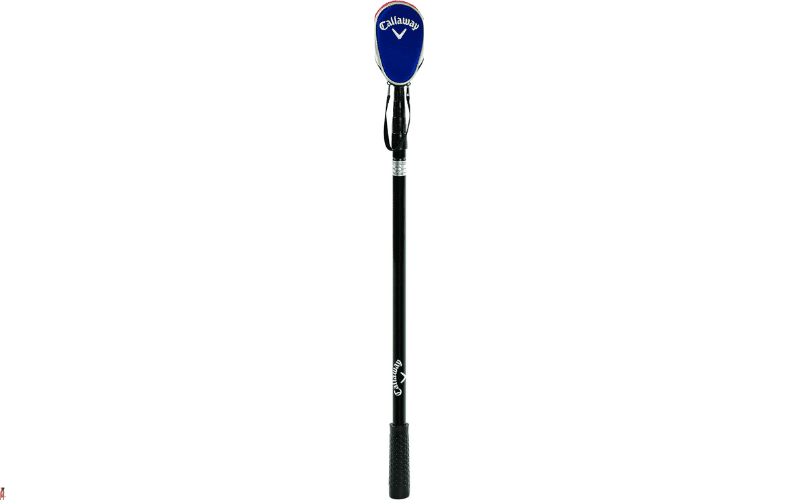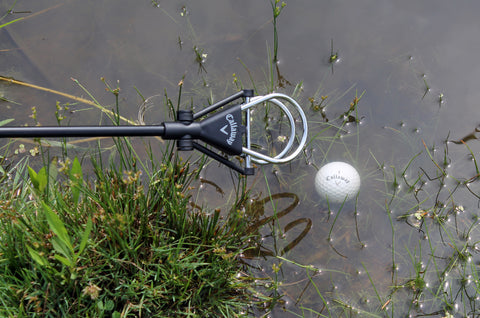Golf is a sport that combines skill, precision, and a deep connection with nature. Yet, the game is not just about hitting the ball; it's also about the tools we use. One such tool that has evolved significantly over the years is the golf ball retriever. This article delves into the fascinating history of this essential piece of equipment, tracing its journey from simple manual methods to advanced mechanical innovations.
Key Takeaways
- Early golf ball retrieval was a manual and labor-intensive process.
- Martin E. Fonken patented the first mechanical golf ball retriever in 1944.
- Technological advancements, such as wheels, improved the efficiency of retrievers.
- Modern retrievers are environmentally friendly and enhance the golfing experience.
- The evolution of retrievers reflects human ingenuity and progress in golf equipment.
The Early Days of Golf Ball Retrieval
Imagine a time when every golf ball on the course had to be picked up by hand. This was the reality for early golfers who faced the tedious task of collecting balls manually. Before the advent of mechanical devices, golf ball retrieval was a labor-intensive process that required patience and time. Most importantly, it was a job that took away from the enjoyment of the game itself.
During these early days, players and caddies would often have to scour the course, bending and reaching for each ball. This method was not only inefficient but also physically demanding. It was clear that a better solution was needed to make the game more enjoyable and less burdensome for players.
Manual Collection Methods
In the absence of technology, golfers relied on simple tools like nets or homemade scoops to gather balls from hard-to-reach places. While these methods were somewhat effective, they were far from ideal. Golfers often found themselves frustrated with the slow pace of collection, which interrupted the flow of the game.
Inefficiencies and Challenges Faced by Early Golfers
The challenges of manual collection were numerous. Besides the physical strain, there was also the issue of time. Golfers had to spend a significant amount of time retrieving balls, which detracted from their practice and play time. Moreover, retrieving balls from water hazards or thick roughs was especially difficult and sometimes impossible without the right tools.
Because of these inefficiencies, the need for a more effective solution became apparent. Golfers wanted a way to retrieve balls quickly and easily, allowing them to focus more on improving their game rather than on the tedious task of collection.
Mechanical Innovations in Golf Ball Retrieval
The first significant breakthrough in golf ball retrieval came in 1944 when Martin E. Fonken introduced the world to a new way of thinking about this task. His invention marked a turning point in the history of golf equipment, providing a glimpse into a future where technology could enhance the sport.
“Martin E. Fonken's 1944 patent was a game-changer, introducing a mechanical approach to golf ball retrieval that reduced the manual effort required.”
Martin E. Fonken's 1944 Patent
Martin E. Fonken's invention was groundbreaking for its time. He developed a machine specifically designed to collect golf balls, which alleviated the tedium of manual collection. His patent described a device that could efficiently gather balls from driving ranges, a task that was previously done by hand.
Key Features and Impact of Fonken's Design
Fonken's design featured a mechanism that could scoop up balls and store them, making the retrieval process much more efficient. This innovation not only saved time but also reduced the physical strain on golfers and caddies. The introduction of Fonken's machine paved the way for further advancements in golf ball retrieval technology.
Advancements in Technology and Design
Following Fonken's innovation, the golf world saw a surge of interest in improving ball retrieval devices. Inventors and engineers began to explore new ways to enhance the design and functionality of these tools, leading to significant technological advancements over the years.
One of the most notable advancements was the incorporation of wheels into the design of golf ball retrievers. This simple yet effective addition transformed the way these devices operated, allowing for easier movement across the course and reducing the effort required to collect balls. For those interested in crafting their own, check out this guide on DIY golf ball retrievers.
Klem R. Wittek's 1965 Enhancements
In 1965, Klem R. Wittek made significant enhancements to the existing designs, further refining the technology. Wittek's improvements included the addition of a front wheel, which provided better stability and maneuverability. This change made it easier for users to push the retriever across different terrains, from smooth fairways to rugged roughs.


Incorporation of Wheels and Improved Maneuverability
The addition of wheels to golf ball retrievers was a pivotal innovation that greatly enhanced their functionality. Wheels allowed the devices to glide smoothly across various surfaces, minimizing the physical effort required to operate them.
This improvement made it possible for even young golfers or those with limited strength to easily retrieve balls, thereby expanding the accessibility of the game.
Moreover, the incorporation of wheels improved the maneuverability of retrievers, enabling them to navigate tight spaces and challenging terrains more effectively. This meant that golf courses could maintain a cleaner, more organized appearance, as balls were swiftly collected without disrupting the natural landscape.
Impact on Golf Course Operations
With the advancements in retriever design, golf courses experienced a significant shift in operations. The efficiency of ball collection increased dramatically, allowing staff to focus on other essential tasks, such as maintaining the greens and fairways.
This operational shift not only improved the overall quality of the courses but also enhanced the playing experience for golfers.
Furthermore, the use of mechanical retrievers reduced the need for large teams of staff dedicated to ball collection, leading to cost savings for golf course management. These savings could then be redirected towards other improvements, such as upgrading facilities or investing in new technologies to further enhance the golfing experience.
Pioneering Designs and Further Innovations
The journey of the golf ball retriever didn't stop with the introduction of wheels. Inventors continued to push the boundaries of design and technology, seeking new ways to optimize these devices for maximum efficiency and ease of use.
As a result, the market saw a variety of innovative designs that catered to the diverse needs of golfers and course operators alike.
William Pohl's No Front Wheel Picker in 1978
In 1978, William Pohl introduced a revolutionary design that eliminated the need for a front wheel. This innovation addressed several limitations of previous models, allowing for sharper turns and reverse movements without damaging the course's delicate grasses.
Pohl's design was particularly beneficial for courses with tight spaces and intricate layouts, where traditional retrievers struggled to perform effectively.
Benefits of Improved Maneuverability Without Ground Damage
Pohl's no front wheel picker offered a unique advantage: it combined superior maneuverability with minimal impact on the course's surface. This was a crucial development, as it ensured that the retriever could operate efficiently without causing harm to the carefully maintained grass.
Golf course operators quickly embraced this design, recognizing its potential to preserve the aesthetic and functional integrity of their courses.
Legacy and Influence on Modern Devices
The innovations introduced by pioneers like Fonken, Wittek, and Pohl have left a lasting legacy on the world of golf. Their contributions laid the groundwork for modern retrievers, which continue to evolve with advancements in technology.
Today's devices are more efficient, user-friendly, and environmentally conscious, reflecting the ongoing commitment to improving the sport. For those looking to enhance their game, exploring fitness exercises to maximize golf swing speed can be a valuable addition to their routine.
Modern retrievers incorporate features such as lightweight materials, ergonomic designs, and even electronic components, further enhancing their functionality and appeal. These advancements not only make the devices more effective but also more accessible to a wider range of golfers, from beginners to seasoned pros.
Integration into Modern Golfing
As the golf ball retriever has evolved, it has become an integral part of the modern golfing experience. These devices are now a staple on courses worldwide, providing golfers with a convenient and efficient way to collect balls and focus on their game.
The widespread adoption of retrievers has transformed the way golf is played and enjoyed, making the sport more accessible and enjoyable for all.
Current Use and Popularity Among Golfers
Today, golf ball retrievers are widely used by golfers of all skill levels. Whether you're a beginner just starting out or a seasoned professional, having a reliable retriever can make a significant difference in your practice and play.
These devices are especially popular at driving ranges, where they help maintain a steady supply of balls for continuous practice.
The Golf Ball Retriever's Role in Environmental Sustainability
Besides enhancing the golfing experience, modern retrievers also play a crucial role in promoting environmental sustainability. By efficiently collecting balls, these devices help reduce waste and minimize the environmental impact of the sport.
This is particularly important as golf courses strive to balance the demands of the game with the need to preserve natural ecosystems.
In conclusion, the history of the golf ball retriever is a testament to human ingenuity and the relentless pursuit of progress. From its humble beginnings as a manual tool to its current status as an essential piece of equipment, the retriever has undergone remarkable transformations.
As we look to the future, we can expect even more exciting innovations that will continue to shape the world of golf.
Conclusion: Celebrating Human Ingenuity in Golf
The evolution of the golf ball retriever is a remarkable journey that showcases human ingenuity at its finest. From the cumbersome manual methods of the past to the sleek, efficient devices we see today, each innovation reflects a desire to improve the game and make it more enjoyable for everyone involved.
This journey is a testament to the creativity and determination of those who have contributed to the development of this essential tool.
Golfers and course operators alike have benefited from these advancements, as retrievers have transformed the way balls are collected, reducing labor and enhancing the overall golfing experience. As we celebrate these achievements, it's clear that the story of the golf ball retriever is one of progress, efficiency, and a commitment to excellence in the sport.
The Story of Progress and Efficiency in Golf Ball Retrieval
The journey of the golf ball retriever is a story of progress and efficiency. It began with the need to address the inefficiencies of manual collection and evolved into a sophisticated tool that enhances the sport. Each stage of its development brought new features and capabilities that improved the experience for golfers.
From Martin E. Fonken's initial patent to the innovations of Klem R. Wittek and William Pohl, each step in the retriever's history has added value to the game. These advancements have not only made the process of ball retrieval more efficient but also contributed to the overall enjoyment and accessibility of golf.
Impact on the Sport of Golf and Future Prospects
The impact of the golf ball retriever on the sport cannot be overstated. By streamlining the ball collection process, these devices have allowed golfers to focus more on their game and less on the mundane task of retrieval. This has led to more enjoyable and productive practice sessions, ultimately enhancing the skill levels of players.
Looking to the future, we can expect further innovations that will continue to refine and improve the golf ball retriever. As technology advances, new materials and designs will emerge, offering even greater efficiency and sustainability. The future of golf is bright, and the continued evolution of the retriever will play a key role in shaping the sport for generations to come.
Frequently Asked Questions (FAQ)
In this section, we address some common questions about the history and development of the golf ball retriever.
What was the first golf ball retrieving device patented?
The first golf ball retrieving device was patented by Martin E. Fonken in 1944. His invention marked the beginning of a new era in golf ball retrieval, introducing a mechanical solution that reduced the manual effort required.
How did early golfers collect golf balls before these devices?
Before the invention of mechanical retrievers, golfers collected balls manually. They relied on simple tools like nets or homemade scoops to gather balls, a process that was time-consuming and physically demanding.
What improvements did Klem R. Wittek introduce in 1965?
Klem R. Wittek made significant enhancements to golf ball retrievers in 1965 by incorporating a front wheel into the design. This improvement provided better stability and maneuverability, making it easier to push the retriever across various terrains.
Why was William Pohl's design considered revolutionary?
William Pohl's design, introduced in 1978, was revolutionary because it eliminated the need for a front wheel. This innovation allowed for sharper turns and reverse movements without damaging the course's surface, making it ideal for tight spaces and intricate layouts.

